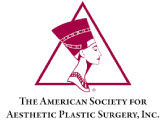The W Plastic Scar Revision Technique described in Albert Borges’ treatise “Elective Incisions and Scar Revision” (1969) is a virtual masterclass on the above problems.
The siting of an incision is often predetermined by the problem needing to be addressed. While the simplest incision would be a curved or straight one closed primarily, the length of the incision often determines the outcome.
A short incision gives a satisfactory long-term result while a long one eventually ends up bowstringing, with a depression in the middle. The long scar, besides bowstringing, also catches light and hence is more obvious.
A good technique to repair these scars would be to revise the scar with the Borges technique of the W plastic repair in which the scar is excised in a zigzag pattern, breaking up the bowstring effect and by changing the direction of the scar.
The “W” effect results in an a dovetailing of multiple short scars which break up a long scar into multiple short lines to improve contour and appearance, as seen in figures 1 to 4 below.







